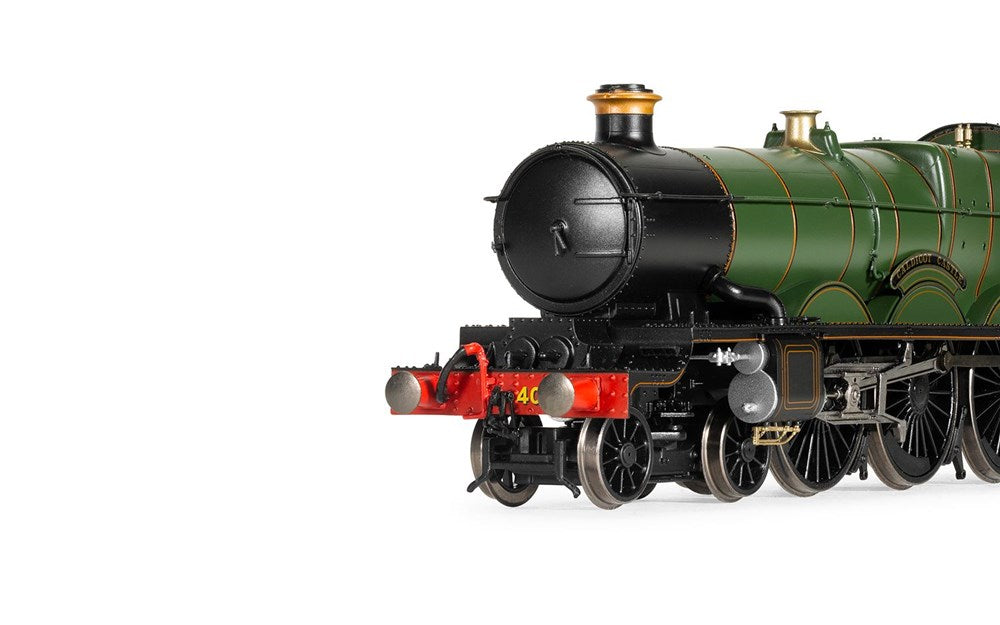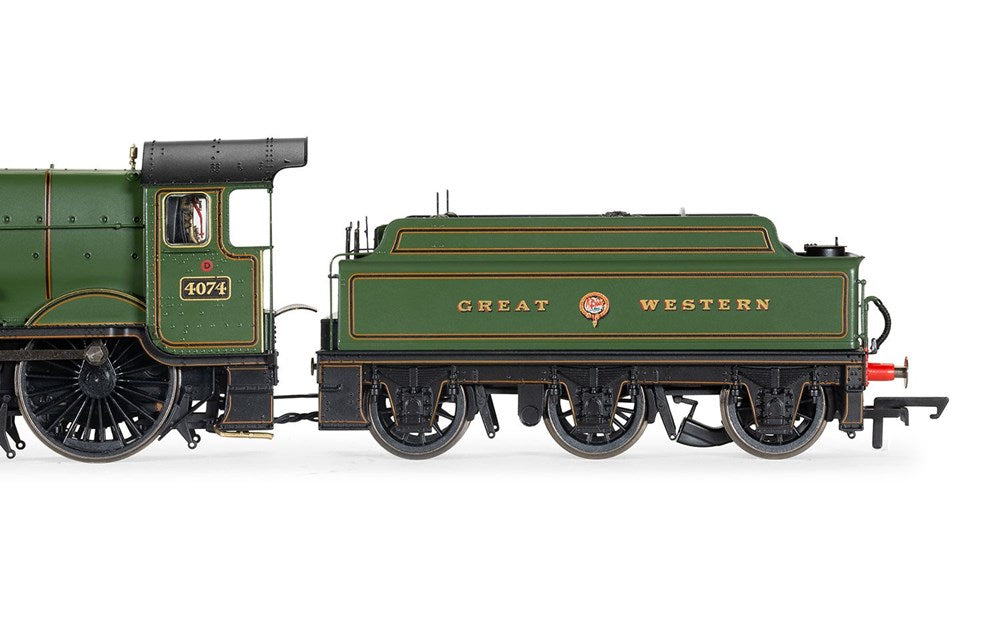
Hornby R30272 OO GWR, Castle Class, 4-6-0, 4074 'Caldicot Castle': Big Four Centenary Collection - Era 3
Product Info
The Castle Class was designed by Charles Collett, the successor to legendary GWR engineer George Jackson Churchward. In truth, Castle Class is nothing more than a nickname owing to most examples of the class being named after western castles with the official GWR designation being the 4073 class.
This name comes from the first example of the Class 4073 Caerphilly Castle, as was common with GWR classes. Charles Collet improved on the work of Churchward with the Castle Class, with the class proving to be among the most powerful on the GWR network. In a tragic twist of fate, Churchward would go on to be killed when struck by one of the succeeding engineers locomotives 4085 Berkeley Castle.
The first of the class would feature at the British Empire Exhibition in 1924 alongside an equivalent engine from the LNER, one 4472 Flying Scotsman. Over the course of the exhibition the GWR claimed their Castle to be more powerful than the LNER contingent, leading to exchange trials between the GWR and image conscious LNER. In April 1925 4079 Pendennis Castle and 4474 Victor Wild would be exchanged between the two companies.
The Castle Class was lighter than the LNER pacific which proved to be an unexpected positive as the LNER found it still capable of hauling their express services doing so faster and more efficiently than their locomotives of the time. Conversely, the GWR found the LNER locomotive to have too long a wheelbase for their rails, hampering is performance on the twisting and winding curves of the western region.
The Castle Class was lighter than the LNER pacific which proved to be an unexpected positive as the LNER found it still capable of hauling their express services doing so faster and more efficiently than their locomotives of the time. Conversely, the GWR found the LNER locomotive to have too long a wheelbase for their rails, hampering is performance on the twisting and winding curves of the western region.
4074 'Caldicot Castle' was the second of the class to be built, again as a bespoke example following on from 4073 'Caerphilly Castle' some four months later. The locomotive would play a part in the LNER exchange trials, when the A1 Pacific 4474 'Victor Wild' was compared to it on GWR rails. The locomotive would pass into BR service while retaining its 4074 running number before being withdrawn in May of 1963. The locomotive would not become one of the eight preserved.
The Hornby Castle class is fitted with a five pole motor and simple mechanism resulting in fantastic performance. DCC users are catered for via an 8 pin socket inside the tender with space for a speaker to be fitted. This model features special packaging as part of its position in the celebration of the centenary of the Grouping Act coming into affect, resulting in the start of the 'Big Four' era.
Tech Specs
- Item Length - Without Packaging (cm)
- 28
- Item Height - Without Packaging (cm)
- 5
- Item Width - Without Packaging (cm)
- 3.5
- Item Weight - Without Packaging
- 0.39
- Item Scale
- 1:76 Scale 00 Gauge
- Finish
- Painted
- Colour
- Green
- Gauge
- OO
- DCC Status
- DCC Ready 21 pin socket
- Operator
- GWR
- Designer
- Charles Collett
- Wheel Configuration
- 4-6-0
- Livery
- GWR Green
- Minimum Curve (mm)
- Radius 2
- Motor
- 5 Pole Skew wound
- Number of Parts
- 1
- Class
- Castle Class
- Buffer Type
- Sprung Metal Buffers
- Coupling Type
- NEM Tension Lock


